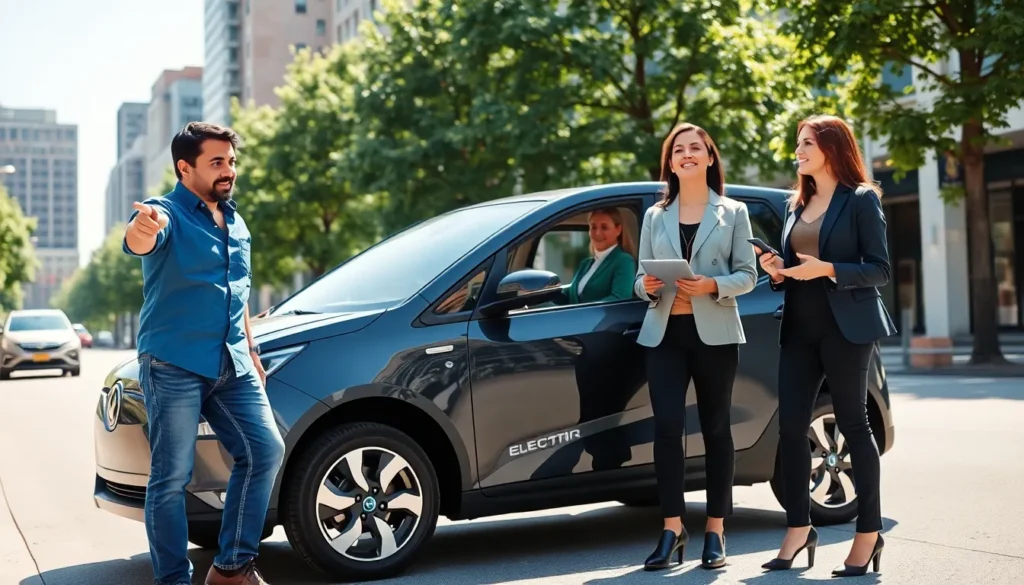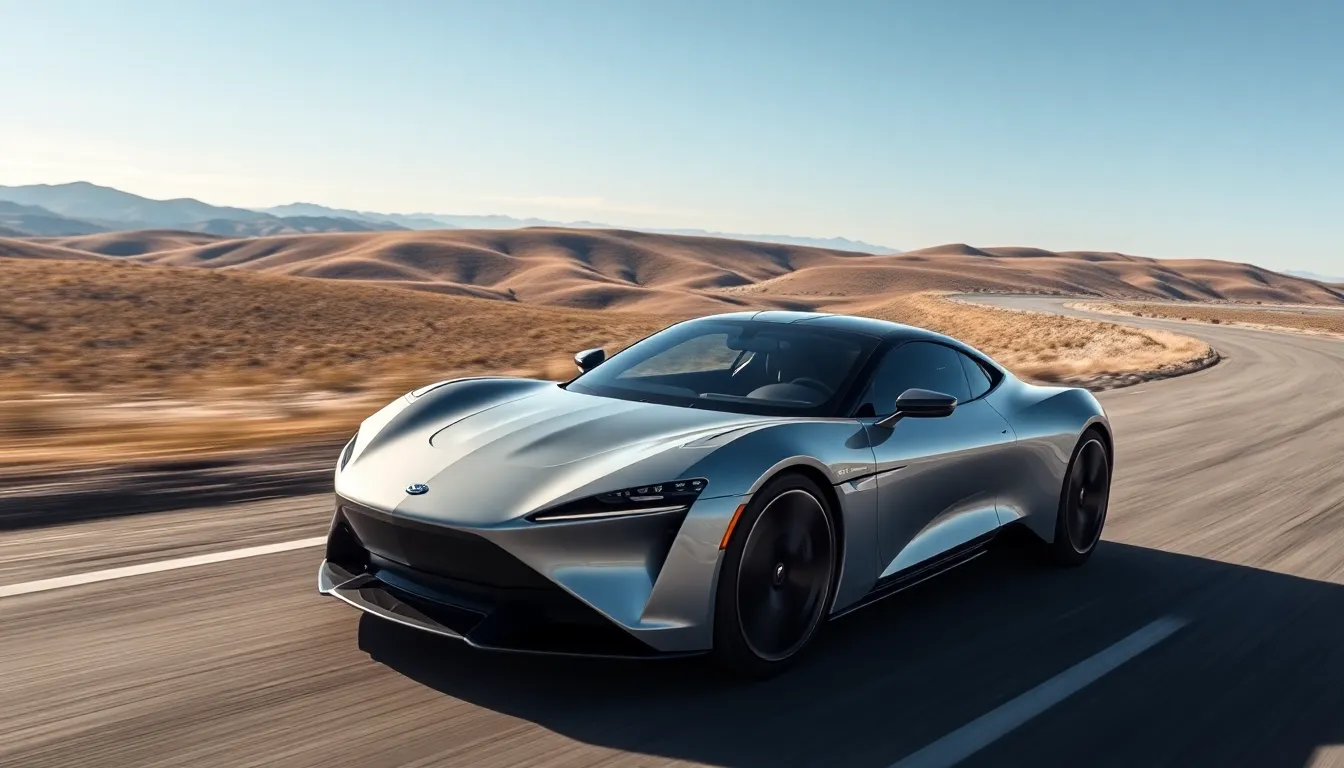In a world where gas prices soar higher than a kite on a windy day, electric utility vehicles are stepping in like the superhero we didn’t know we needed. These eco-friendly marvels are not just saving the planet; they’re also saving fleets and businesses a pretty penny. Imagine zipping around town without leaving a trail of smoke or a dent in your wallet. Sounds dreamy, right?
Table of Contents
ToggleOverview of Electric Utility Vehicles
Electric utility vehicles (EUVs) represent a transformative solution for businesses aiming to reduce their carbon footprint while optimizing operational costs. EUVs function on electric power and typically offer functionalities similar to traditional utility vehicles, such as transporting goods and personnel.
Benefits of Electric Utility Vehicles
- Cost Savings: Electric utility vehicles reduce fuel expenses significantly. With charging costs averaging 2-3 cents per mile, businesses can save substantially compared to gasoline or diesel costs, which often exceed 10-15 cents per mile.
- Environmental Impact: Emissions from EUVs are virtually non-existent during operation. By transitioning to electric models, companies can help decrease air pollution and lower their overall environmental impact, contributing to climate change mitigation.
- Maintenance Efficiency: EUVs require less maintenance due to fewer moving parts. Businesses experience long-term savings with reduced servicing and repair costs, enhancing operational efficiency.
Types of Electric Utility Vehicles
- Light Duty Electric Utility Vehicles: Ideal for urban settings, these vehicles operate effectively in city landscapes and include models such as the electric cargo van.
- Medium Duty Electric Utility Vehicles: Suitable for delivery and service applications, these vehicles often have greater range and payload capacity than light-duty counterparts.
- Heavy Duty Electric Utility Vehicles: Designed for more demanding tasks, these vehicles excel in construction and logistics, providing robust performance without the typical emissions.
Adoption Trends
The adoption of electric utility vehicles is accelerating, driven by advances in battery technology and expanding charging infrastructure. Many regions report an increase in fleet electrification, with companies aiming to meet sustainability targets. Governments also incentivize this shift through tax credits and grants, further encouraging businesses to invest in electric models.
Electric utility vehicles not only represent a sustainable transportation option, but also a strategic investment in future business operations.
Benefits of Electric Utility Vehicles

Electric utility vehicles (EUVs) offer significant advantages for businesses and the environment. These benefits become evident through their impact on sustainability and operational costs.
Environmental Impact
Electric utility vehicles contribute substantially to reduced greenhouse gas emissions. Unlike traditional vehicles, EUVs produce zero tailpipe emissions, enhancing air quality, particularly in urban areas. The adoption of EUVs lessens dependence on fossil fuels, promoting cleaner energy sources. As many EUVs utilize renewable energy during the charging process, their overall environmental footprint diminishes further. This transition aligns with global sustainability goals, encouraging companies to adopt greener practices.
Cost Savings
Electric utility vehicles lead to noteworthy cost savings for businesses. Owners experience reduced fuel expenses, as electricity typically costs less than gasoline or diesel. Maintenance costs decline due to fewer moving parts, resulting in lesser wear and tear. Companies can also take advantage of government incentives for switching to electric fleets, enhancing financial savings. With lower operational costs, businesses position themselves for greater profitability while maintaining an eco-friendly stance.
Types of Electric Utility Vehicles
Electric utility vehicles (EUVs) come in various types, each designed for specific applications. Understanding these categories is crucial for selecting the right vehicle for a given task.
Light-Duty Electric Utility Vehicles
Light-duty electric utility vehicles cater to tasks requiring lower payload capacities. These vehicles excel in urban environments, offering versatility for deliveries and small-scale services. Models like the electric version of the Ford Transit or the Nissan e-NV200 provide efficient cargo space while maintaining ease of maneuverability. Typical applications include last-mile delivery, facility maintenance, and landscaping. The light design reduces energy consumption, ensuring operational efficiency.
Medium-Duty Electric Utility Vehicles
Medium-duty electric utility vehicles are ideal for industries that require a balance between payload capacity and accessibility. These vehicles typically range from 6,000 to 14,000 pounds in gross vehicle weight. Examples include models like the Workhorse C-Series and the electric versions of popular box trucks. They serve applications such as municipal services, transportation for public works, and medium-scale deliveries. Enhanced battery capacity supports extended operation hours, making these vehicles practical for businesses seeking to optimize fleet efficiency.
Heavy-Duty Electric Utility Vehicles
Heavy-duty electric utility vehicles support demanding applications with higher weight capacities, usually exceeding 14,000 pounds. These vehicles are suitable for construction, waste management, and industrial applications. Examples include the Tesla Semi and the Freightliner eCascadia. Heavy-duty EUVs deliver powerful performance while minimizing emissions, making them attractive for companies focused on sustainability. Advanced battery technology enables long-haul capabilities, further enhancing their utility in diverse operational scenarios.
Challenges Facing Electric Utility Vehicles
Electric utility vehicles encounter several challenges that may impede their widespread adoption. Understanding these obstacles is critical for companies considering EUVs for their operations.
Charging Infrastructure
Charging infrastructure remains a primary challenge for electric utility vehicles. Insufficient charging stations often leads to range anxiety among operators. Many regions lack the extensive network required to support frequent long-distance travel. Companies need reliable access to charging facilities, especially for heavy-duty applications that require significant downtime between uses. Developing fast-charging solutions and expanding the existing infrastructure becomes essential to truly capitalize on the advantages of EUVs.
Initial Costs
Initial costs pose another significant challenge for electric utility vehicles. While EUVs often result in long-term savings, upfront investment in these vehicles remains higher compared to traditional gas-powered options. Prices for EUVs can vary widely based on vehicle size and technology. Organizations require substantial capital for fleet transition, which might deter some businesses from making the switch. Financial incentives and governmental subsidies play vital roles in reducing these initial costs and encouraging broader adoption of electric vehicles in various industries.
Future of Electric Utility Vehicles
The future of electric utility vehicles (EUVs) looks promising with continued advancements in technology and growing regulatory support. Increased emphasis on sustainability and corporate responsibility drives companies to integrate EUVs into their fleets. The evolution in battery technology leads to higher energy densities, enabling longer ranges and quicker charging times, which addresses range anxiety.
The growing charging infrastructure plays a critical role in the future of EUVs. Companies, local governments, and energy providers are collaborating to expand access to fast-charging stations. This expanded infrastructure not only eases operational concerns but also promotes a shift towards electric mobility in urban areas and beyond.
Government incentives and policies increasingly support the adoption of electric vehicles. Tax breaks, rebates, and grants encourage businesses to transition to EUVs. These financial incentives lessen the initial investment burden, paving the way for wider acceptance.
Adoption rates for EUVs are rising across various sectors, including delivery services and municipal applications. Businesses recognize the operational efficiency gained from lower fuel and maintenance costs while contributing to environmental sustainability. As more businesses see the benefits, the demand for EUVs is anticipated to grow.
Emerging technologies such as vehicle-to-grid (V2G) systems hold additional potential for EUVs. V2G technology allows vehicles to return energy to the grid, providing renewable energy storage solutions. This system enhances grid stability while offering businesses the opportunity to monetize unused battery capacity.
The future landscape of electric utility vehicles is defined by technological innovations, supportive policies, and evolving industry needs, positioning EUVs as a critical component of sustainable transportation solutions.
Electric utility vehicles are paving the way for a more sustainable future in transportation. Their ability to reduce operational costs while minimizing environmental impact makes them an attractive option for businesses across various sectors. As technology advances and charging infrastructure expands, EUVs are set to become a vital component of modern fleets.
The push for greener alternatives is not just a trend; it’s a necessary shift towards responsible business practices. With the right support and incentives, the transition to electric utility vehicles will not only enhance profitability but also contribute to a healthier planet. Embracing this change is essential for businesses aiming to thrive in an increasingly eco-conscious marketplace.





